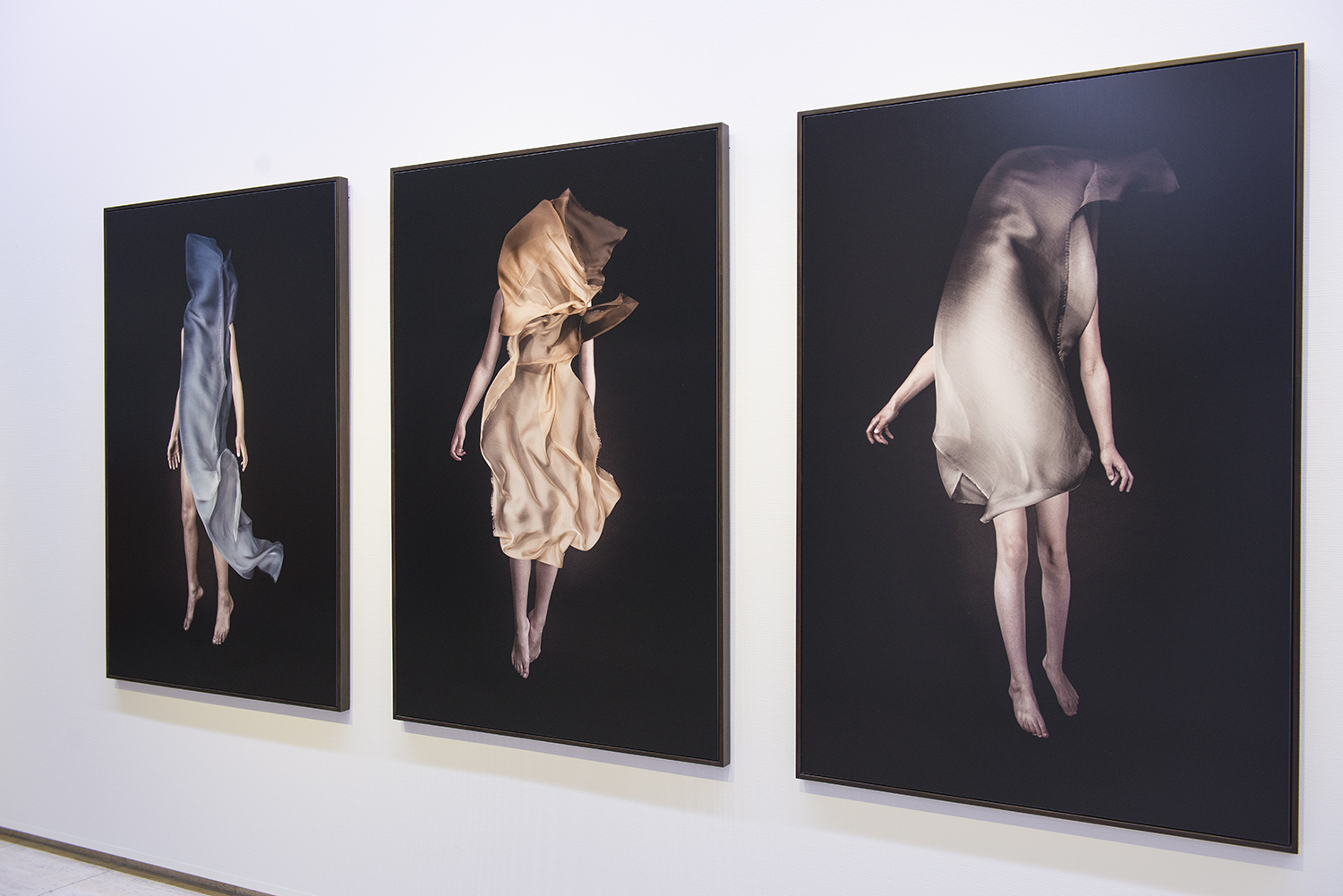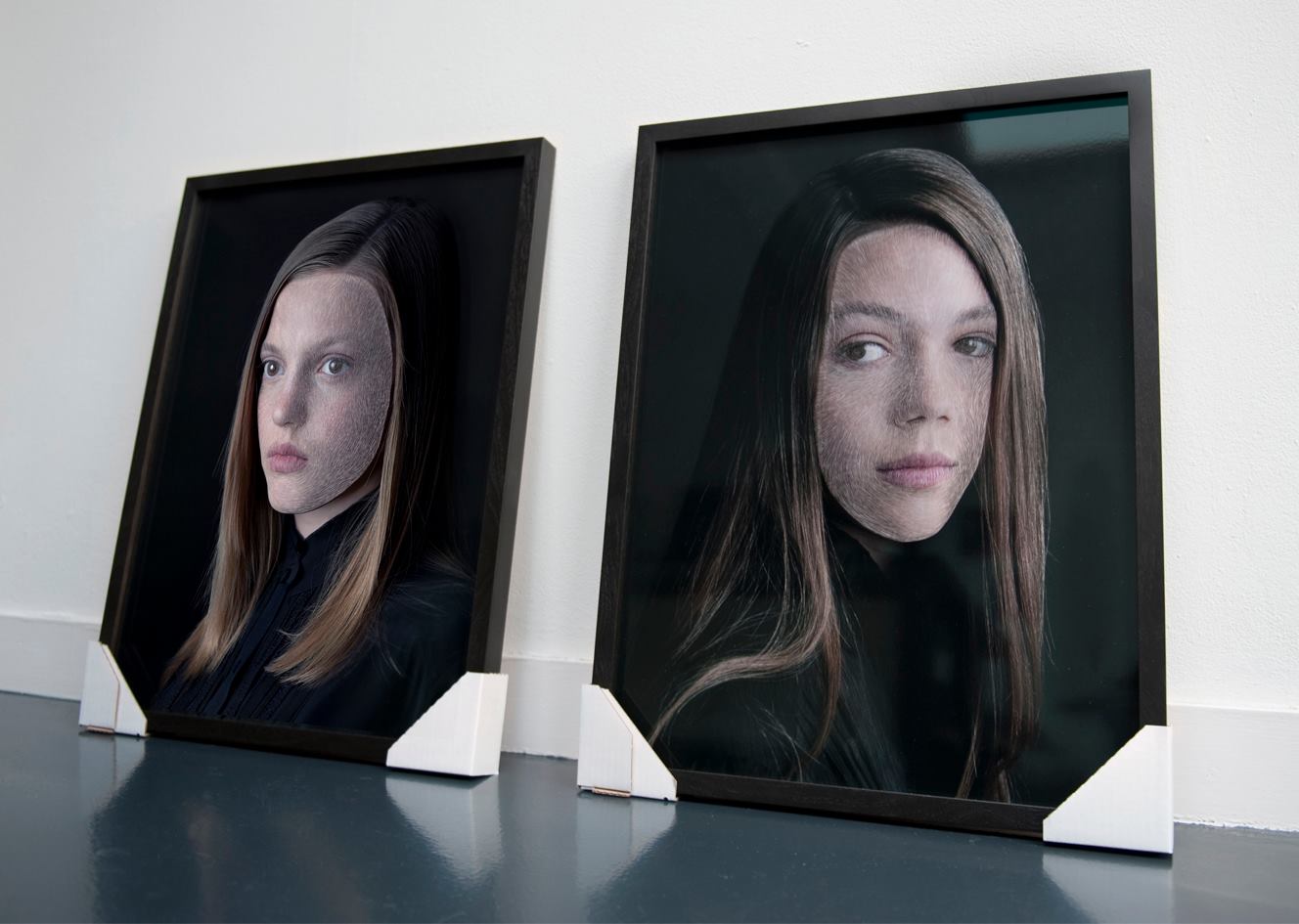


About: Hiddenseries was created in 2012 and first exhibited at Museum de Fundatie in Zwolle / Heino in the Netherlands.Works from the series are included in corporate and museum collections in the Netherlands including Museum de Fundatie.
Available works: Yes, limited
All works of the Hidden Series come in a edition of 3. Please contact Studio Danielle Kwaaitaal for sizes, prices and framing options. Studio Danielle Kwaaitaal ships her work worldwide in professional handmade crates. For inquiries please sent a message to danielle@daniellekwaaitaal.nl
Press release, Heino/Wijhe,
Danielle Kwaaitaal – Hidden Series
Museum de Fundatie - Kasteel het Nijenhuis, Heino/Wijhe
9 September 2012 to 6 January 2013
In the mid-nineties, Danielle Kwaaitaal became well known for her digital photos in which she explored the boundaries of photography. In her work, she not only oriented her attention to the traditional public, but also to young people from the house and dance culture. With her recent series of girls’ portraits, Hidden Series, she returns to the source by introducing her pictorial signature into her photos. Hidden Series will enjoy its première on 9 September 2012 in Kasteel het Nijenhuis. Kwaaitaal will also show a video installation that she specially created for Museum de Fundatie.
In thematic terms, Hidden Series deals with identity, intimacy and beauty, just like almost all of the work of Danielle Kwaaitaal (Bussum, 1964). The girls on the photos are all around twelve years old. Their black clothing and classical pose lends them a timeless allure, which seems to be exactly contrary to the temporary phase between girl and woman that they now occupy. What the viewer suddenly observes from close-by is that the faces are covered with hundreds of short stripes that – as in a portrait by Van Gogh – closely follow the contours. Kwaaitaal has applied the stripes with a digital drawing pen. Thus, the photograph is ‘right into the skin’ of her subjects, but paradoxically, this intervention creates a certain distance between the girls and the viewer. The ruthless focus of the original photo is undone. It is as if we are seeing the girls through a fine veil.
Hidden Series, which enjoys its première along with the Verstegen exhibition in Kasteel het Nijenhuis, is a surprising but nevertheless logical step in the artistic development of Danielle Kwaaitaal. In her earliest work she zoomed in close to the physique and created sensual land-scapes of fingers, buttocks, nipples and shoulders, or abstract patterns of noses, navels and pu-bic hair. Although skin has remained a central motif in her work, Kwaaitaal has increasingly be-gun to zoom out, and intimate and anonymous detail has now made way for the individuality and authenticity of the portrait. The use of the digital drawing pen dovetails perfectly with this development. ‘By working with increasingly advanced computers, my need for the “human touch” has also become greater’, says Kwaaitaal. ‘In the new series of photos, I create a direct link between technology and corporality. I try to focus on these two extremes and to enable them to blend together.’
Besides Hidden Series, a video by Kwaaitaal is also on display. To make this, she entered into collaboration with the promising young music producer Arjuna Schiks. The video was commissioned by Museum de Fundatie. The point of departure was the painting Papillons by the French avant-garde artist Francis Picabia (1879-1953), which is one of the masterpieces in the Museum’s collection. It was not the painting itself, but rather Picabia’s vision as expressed by the painting, his play of styles and movements, transparency, and content-related and formal strati-fication, that formed the impulse to present the varied Museum collection in a torrent of images
accompanied by Schiks’s music. The video is also a statement over her own work. Just as the work of Picabia, the art of Danielle Kwaaitaal cannot be captured under one denominator, but excels precisely in the expansion of boundaries and the creation of new and unexpected possibil-ities. From 9 September 2012 onward, Kasteel het Nijenhuis also presents the exhibition Jan Hendrik Verstegen – Ademloze ruimtelijkheid (Breathless Spatiality).
Museum de Fundatie administers a sizable collection of visual art that has its origins in the collection of the former director of Museum Boijmans-Van Beuningen in Rotterdam, Dirk Hannema. This collection was later significantly supplemented with the art collection of the Province of Overijssel and other instances, as well as with other works. Museum de Fundatie has two splendid locations at its disposal: Kasteel het Nijenhuis near Heino and the Paleis aan de Blijmarkt in Zwolle. Museum de Fundatie is supported by the Province of Overijssel, the Municipality of Zwolle and the BankGiro Lottery. Rabobank IJsseldelta, Hemmink B.V., Baker Tilly Berk, Wijzonol Bouwverven, Nysingh Advocaten-Notarissen, WBOOKS, DSM, Unica, Novon Schoonmaak, DeltaWonen, Windesheim, EposPress, Zehnder Group Nederland/J.E. StorkAir, Bouwfonds Cultuurfonds, Deltion College, NS, Turing Foundation, Prins Bernhard Cultuurfonds, SNS Reaalfonds.